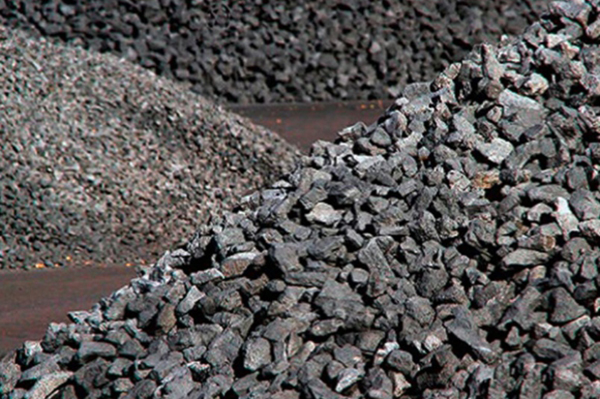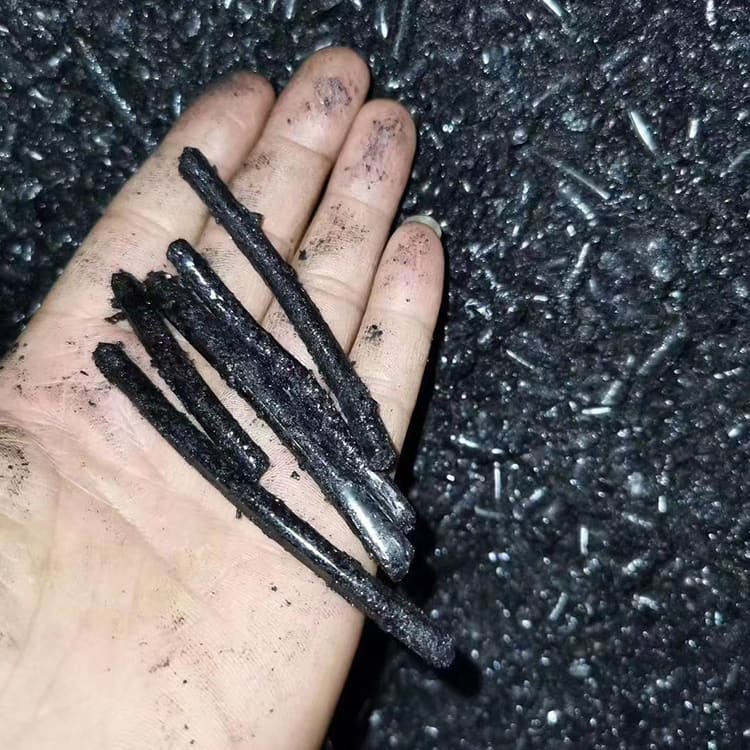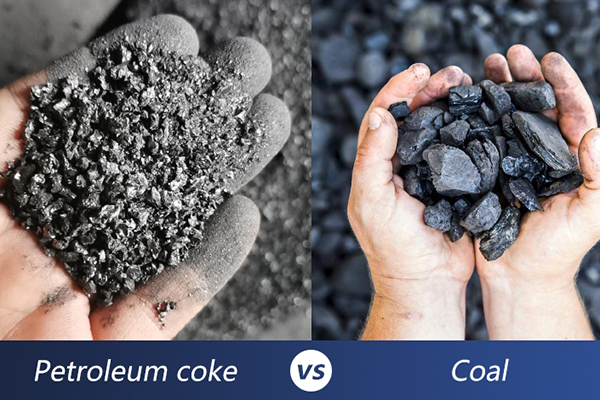As a procurement officer or business owner in industries like aluminum smelting, steel manufacturing, or construction, you constantly make critical decisions about raw materials. Two of the most common carbon-based products you'll encounter are coal and petroleum coke (often called petcoke). While they might seem similar, their properties, origins, and ideal applications are vastly different. Choosing the wrong one can impact your production efficiency, product quality, and bottom line. This guide is here to help you navigate these differences with confidence.
My name is Allen, and as the owner of a factory with seven production lines specializing in coal tar products and petroleum coke, I've spent years helping clients like you understand these materials. This article will break down everything you need to know about petroleum coke vs coal. We'll explore where they come from, how they differ, their specific industrial uses, and what to look for in a reliable supplier. By the end, you'll be able to make a more informed, strategic purchasing decision for your company.
What is Coal, Really? A Look Back at a Natural Fossil Fuel
Coal is a name everyone knows. It's a natural, combustible sedimentary rock, a true fossil fuel. Its story begins millions of years ago, when vast forests and swamps covered the Earth. As plants died, they sank into the muck, and over immense periods, heat and pressure from the layers of earth above transformed this organic matter into the black or brownish-black rock we call coal. It's a complex mixture of carbon, hydrogen, sulfur, oxygen, and nitrogen.
There are different ranks of coal, like lignite, sub-bituminous, bituminous coal, and anthracite, each with varying levels of carbon and energy. For many industrial processes, raw coal isn't the final product. A specific type, known as coking coal (or metallurgical coal), is heated in an oxygen-free furnace to produce metallurgical coke. This process drives off volatile components, leaving a high-carbon, porous material. This coke is essential for the steel industry, where it's used as both a fuel and a reducing agent to smelt iron ore in a blast furnace. So, while coal is used as a direct fuel in power plants, it's also the parent material for the coke used in steelmaking.
So, What Exactly is Petroleum Coke (Petcoke)?
Now, let's talk about petroleum coke. Unlike coal, petroleum coke is not a naturally occurring mineral. It's a manufactured byproduct of the oil refining process. When crude oil is processed at an oil refinery to produce gasoline, diesel, and other fuels, there's a heavy, residual material left at the bottom of the distillation unit. This residue undergoes further processing, called coking, to squeeze out every last drop of valuable liquid hydrocarbons of petroleum. The solid, carbon-rich material that remains is petroleum coke, also known as petcoke.
Think of it this way: if crude oil is a log, then gasoline is the fine lumber, and petcoke is the highly compressed, energy-dense sawdust left over. But this "sawdust" is incredibly valuable. Petcoke is composed almost entirely of carbon, with some residual sulfur and heavy metals, depending on the source of the crude oil. Its high carbon content and calorific value make it a potent energy source and a critical raw material for various industrial processes. This coke is a cornerstone of many modern industries.

How is Petroleum Coke Made? A Simple Look at the Oil Refining Process
Understanding how petroleum coke is made helps clarify its properties. The most common method is a chemical engineering process called delayed coking. It’s a fascinating process, really a form of thermo-based chemical engineering. Heavy oil residue from the primary refining units is heated to a very high temperature (around 900°F or 480°C) in a furnace and then pumped into massive vertical drums, known as coke drums.
Inside these drums, the intense heat performs what is known as thermal cracking. The long hydrocarbon molecules "crack" into smaller, more valuable ones, which rise as vapor and are collected. This process leaves behind a solid, pure carbon substance that sticks to the inside of the drum—this is petroleum coke. This raw product is called "green coke," not because of its color, but because it hasn't been further processed. The coking process is a brilliant way for an oil refinery to maximize its output from every barrel of crude oil. This method ensures that even the heaviest parts of the oil are turned into a useful product, the powerful coke.
Petroleum Coke vs Coal: What are the Main Differences?
For a procurement officer, the devil is in the details. The main difference between coal and petroleum coke lies in their composition and performance characteristics. I’ve put together a simple table to highlight the key points in this coke vs coal debate.
| Feature | Petroleum Coke (Petcoke) | Coal (Typical Bituminous) |
|---|---|---|
| Origin | A man-made byproduct of oil refining. | A naturally occurring fossil fuel. |
| Carbon Content | Very High (80-95%) | High (60-80%) |
| Ash Content | Very Low (Typically <1%) | Lower to Moderate (5-15%) |
| Volatile Matter | Low (Typically 5-15%) | High (20-40%) |
| Sulfur Content | Varies widely (0.5% - 8%), depends on the crude oil. | Varies (0.5% - 5%) |
| Heating Value | Very High (14,000-15,500 BTU/lb) | High (11,000-14,000 BTU/lb) |
| Moisture | Very Low | Higher |
As you can see, petcoke has a higher carbon content, lower ash, and a significantly higher heating value (or calorific value) than coal. This means you get more energy per ton from petcoke. However, the sulfur content in petcoke can be a critical factor. Low-sulfur petcoke is a premium product, while high-sulfur coke is typically used in applications like cement kilns, where the sulfur can be captured in the final product. The low volatile matter in petcoke also means it burns more steadily, which is a desirable trait in many industrial processes. This is a crucial distinction between coal and coke.
What are the Different Types of Petroleum Coke You Should Know?
Not all petroleum coke is created equal. The type of crude oil and the specifics of the coking process result in different grades of petcoke. Knowing these types of petroleum coke is crucial for sourcing the right material.
- Needle Coke: This is the highest-grade, premium form of petroleum coke. It has a highly crystalline, needle-like structure, very low sulfur, and low metal content. Needle coke is the preferred raw material for making graphite electrodes used in electric arc furnaces for the steel industry. It is a specialized, high-value product.
- Sponge Coke: This is the most common type of petcoke. It has a porous, sponge-like appearance, hence the name. Sponge coke is the primary material used to produce calcined petroleum coke for the aluminum industry. Its properties can vary, but it's a versatile and widely used grade of coke.
- Shot Coke: This form of coke is made from very heavy, asphaltene-rich crude oils. It forms as small, hard, spherical pellets that resemble buckshot. Shot coke is generally considered a lower-quality coke because its hardness makes it difficult to crush and calcine, and it often has high sulfur content. It is typically used as a fuel.
- Fuel-Grade Coke: This isn't a structural type but a classification based on use. It refers to petcoke with higher levels of sulfur and metals that make it unsuitable for high-purity applications like aluminum or steel. This coke is mainly used as a cost-effective fuel in power plants and cement production, where the emissions can be managed. The content of petcoke, specifically its impurities, determines its final application.
Is Petcoke a More Efficient Fuel Than Coal?
This is a question I get all the time. On a pure energy basis, the answer is yes. Petroleum coke is a more efficient fuel than coal. Its higher energy content means that burning one ton of petcoke releases more heat than burning one ton of thermal coal. For facilities like power generation plants or industrial boilers, this means you need less material to produce the same amount of energy, which can lead to cost savings in transportation and handling.
However, efficiency isn't just about heat. The high sulfur content in many grades of fuel-grade petcoke is a major consideration. When this coke is used as fuel, the sulfur is released as sulfur dioxide (SO2), a pollutant that requires expensive scrubbing technology to remove from flue gas. Therefore, the decision to use coke or petcoke over coal often comes down to a trade-off: the higher energy content of petcoke versus the potential for higher emissions and the cost of managing them. For industries like cement manufacturing, this is less of an issue, as the alkaline nature of the process naturally captures the sulfur.

Let's Talk About Calcined Petroleum Coke: What is it and Why Does it Matter?
For industries like aluminum smelting, green coke is just the starting point. The real magic happens through calcination, which creates calcined petroleum coke (CPC). Calcination is a process where raw green coke is heated in a rotary kiln to extremely high temperatures (up to 2,460°F or 1,350°C). This intense heat does something very important: it burns off any remaining volatile matter, moisture, and other impurities.
The result is an incredibly pure, electrically conductive carbon-rich solid. Calcined petroleum coke is over 98.5% carbon and is the essential ingredient for making carbon anodes. These anodes are massive carbon blocks that conduct the electricity needed to smelt alumina (aluminum oxide) into pure aluminum metal. Without high-quality calcined petroleum coke, modern aluminum production would be impossible. The quality of the CPC, especially its purity and structure, directly impacts the efficiency of the smelting process and the quality of the final aluminum. This is a perfect example where the initial coke material must be of a superior grade.
Where is Petroleum Coke Used Across Major Industries?
The applications for petroleum coke are diverse and vital to the global economy. As we've discussed, its use depends heavily on its grade, particularly its sulfur content and structure.
Here’s a quick breakdown of the primary industrial uses:
- Aluminum Industry: The largest consumer of high-grade, low-sulfur calcined petroleum coke for making carbon anodes.
- Steel Industry: Needle coke is indispensable for manufacturing graphite electrodes for electric arc furnaces. Coke is also used as a carbon additive (carburizer) to increase the carbon content of steel.
- Fuel Source: Fuel-grade petcoke is widely used as a fuel in cement kilns and power plants. Its high heating value makes it an economical alternative to coal, especially in facilities equipped to handle its sulfur content. Petroleum coke used for electricity generation is a major market.
- Other Industries: Petroleum coke finds its way into many other areas. It's used in the production of titanium dioxide (a white pigment used in paint, paper, and plastics), as a raw material for certain chemicals, and in manufacturing products like our High temperature asphalt, which requires stable carbon components. Different forms, like Ball pitch, are developed to meet specific handling and application needs, minimizing dust and improving usability in various industrial processes.

How Can You Ensure Quality When Sourcing Petcoke and Coal Products?
This is perhaps the most critical question for a procurement professional like Mark. As someone who exports to the USA, Europe, and Australia, I know that your biggest concerns are quality, reliability, and communication. Here are some firsthand insights on how to protect your investment and avoid common pain points.
- Demand Comprehensive Specifications: Don't just order "petcoke." Demand a detailed Certificate of Analysis (COA) for every batch. Key parameters to check are carbon content, sulfur, ash, volatile matter, and moisture. For calcined petroleum coke, you also need to know its density and electrical resistivity. A good supplier will provide this proactively.
- Verify Certifications: Certificate fraud is a real problem. Ask for copies of ISO 9001 (Quality Management) and ISO 14001 (Environmental Management) certifications. But don't stop there. A reputable factory won't mind if you independently verify these. It shows you're a serious buyer, and it protects you from suppliers who cut corners.
- Prioritize Clear Communication: I've heard stories of frustrating delays caused by poor communication. Your supplier's sales representative should be knowledgeable and responsive. They should be able to answer your questions clearly, even if they're technical. In our factory, we train our team to understand not just our products, but our customers' applications, so we can be a resource, not just an order-taker.
- Discuss Logistics and Packaging Upfront: A delayed shipment can shut down your production line. Discuss Incoterms, shipping schedules, and packaging options clearly. Do you need coke in bulk, 1-ton jumbo bags, or another format like Medium temperature asphalt block? A reliable supplier has a robust logistics process and can accommodate your needs to ensure your material arrives safely and on time.
Choosing the Right Supplier: A Partnership for Success
In this business, you're not just buying a commodity; you're building a supply chain. Finding the right supplier is about more than just the lowest price—it's about finding a partner who values quality, transparency, and reliability as much as you do. As a High Quality Coal Tar Pitch Factory and Supplier, we've built our business on this very principle. A factory with deep experience, multiple production lines, and a history of exporting to demanding markets is more likely to understand the importance of consistency and service.
The journey from crude oil or a coal seam to your factory floor is a long one. Whether you need fuel-grade petcoke for your cement plant, high-purity calcined petroleum coke for aluminum smelting, or metallurgical coke for your steel mill, your supplier is your most important link in that chain. Look for a partner who communicates clearly, provides verifiable documentation, and is invested in your success. Because when your supplier succeeds, you succeed. The relationship between coal and coke is complex, as is the choice between them and petroleum coke. A good partner helps you navigate these choices with ease.
Key Takeaways to Remember
- Origin is Key: Coal is a natural fossil fuel, while petroleum coke (petcoke) is a man-made byproduct of the oil refining process.
- Higher Energy, Different Challenges: Petcoke has a higher calorific value and lower ash than coal, making it a more energy-dense fuel. However, its sulfur content can be higher and requires management.
- Grades Matter: From high-value needle coke for steel to fuel-grade coke for power plants, the type of petcoke determines its application and price.
- Calcination is Crucial: Calcined petroleum coke (CPC) is a purified, high-carbon product essential for the aluminum industry.
- Vet Your Supplier: Always demand detailed specifications (COAs), verify certifications, and prioritize partners who offer clear communication and reliable logistics to avoid costly production delays.
Post time: 07-21-2025





